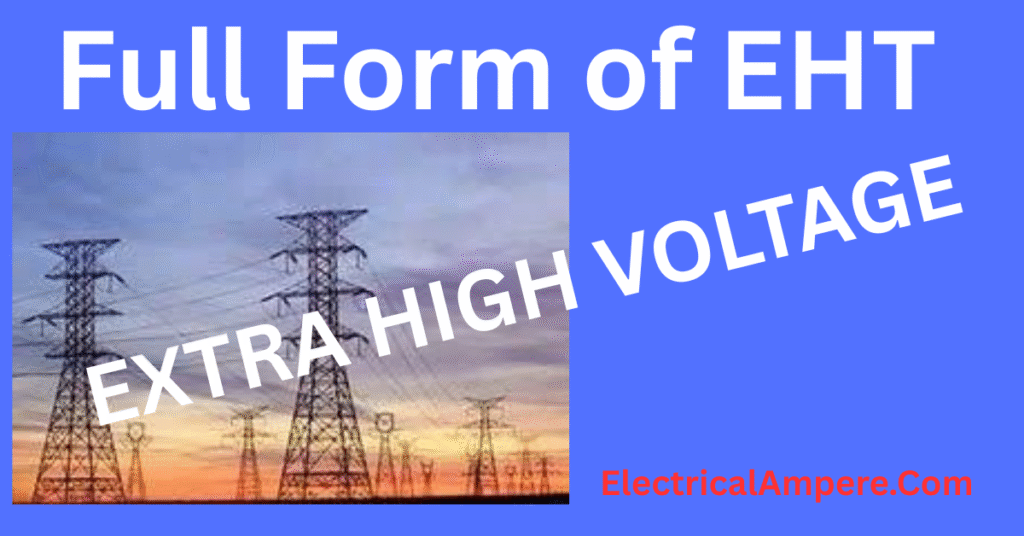Discover the EHT full form in electrical, its voltage range, applications, and importance in power transmission. Learn how Extra High Tension lines ensure efficient and safe electricity distribution.
Understanding voltage classifications is crucial in power distribution. Based on the Indian Electricity Rules, 1956 (Sec. 2), electrical lines are categorized into LT, HT, and EHT.
When dealing with power transmission and distribution systems, understanding the voltage classifications is essential. One such classification is EHT, which stands for Extra High Tension in electrical engineering.
EHT Full Form in Electrical
The EHT full form in electrical is Extra High Tension. It refers to electrical voltage levels above 33,000 volts (33kV). EHT is primarily used in transmission lines that carry bulk electricity over long distances from generating stations to substations.
This classification plays a crucial role in reducing power loss and ensuring efficient energy transmission across large geographic areas.

Voltage Range for EHT Lines
According to the Indian Electricity Rules:
- EHT voltage begins above 33kV.
- Common EHT voltage levels include 66kV, 110kV, 132kV, 220kV, and 400kV.
- These voltage levels are suitable for long-distance and high-load transmission.
Why EHT is Used?
Using Extra High Tension lines has several advantages:
- Reduced Power Losses – High voltage reduces current and minimizes I²R losses.
- Efficient Long-Distance Transmission – Ideal for connecting remote power plants to cities.
- Cost-Effective Infrastructure – Fewer substations and transformers needed in between.
Where is EHT Used?
- Power generation stations
- National grid transmission lines
- Industrial zones requiring bulk power
- Inter-state electricity transmission networks
EHT Line Voltage Variation Limits
The voltage in EHT lines must remain within a defined range to prevent damage:
- Upper limit: +10%
- Lower limit: –12.5%
For example, for 132kV:
- Lower limit: 115.5kV
- Upper limit: 145.2kV
Conclusion
The EHT full form in electrical—Extra High Tension—is a vital part of the power system. It ensures large-scale electricity transmission with minimal losses and maximum efficiency. Understanding the purpose and range of EHT lines helps engineers and technicians design safer and more reliable power infrastructures.
Read Next:
- What is LT and HT Line?
- What is RYB in Three-Phase Electrical System?
- Line Transmission Losses
- High Tension (HT) Power Cable: Types, Parts, and Applications
- HT Switchgears: Types, Components & How They Work
- What Are LT and HT Panels? Types, Uses, and Key Differences
- What is the Difference Between HT and LT Motor?